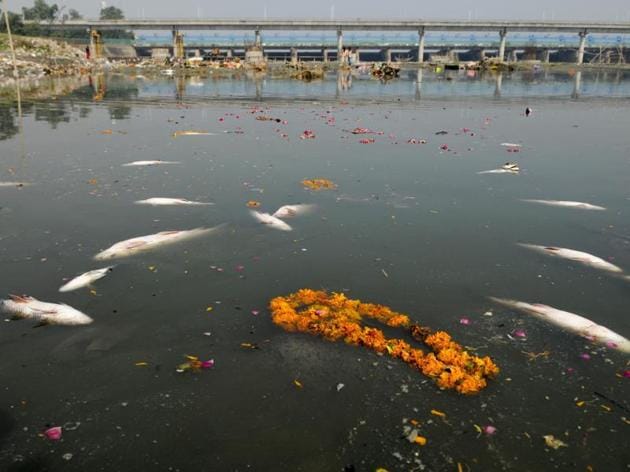Yamuna burning ghat gets a Green Waste Reprocessor
The waste reprocessor at the Nigambodh ghat in Delhi will convert flower waste into havan samagri that will be distributed free of cost to people who want to perform havans there.
A Green Waste Reprocessor (GWR) was inaugurated at Nigambodh Ghat on the banks of the Yamuna River, one of the oldest burning ghats in Delhi by environment minister, Harsh Vardhan, on Tuesday.

‘GWR is a promising machine which will reprocess flowers and leaves that come to the Ghat. Earlier it was either thrown away into the river, or would pile up as refuse which was removed by municipality trucks. Either way it added to pollution,” Harsh Vardhan said. “With GWR, the entire volume of flower waste will be reprocessed on daily basis. Thereby saving our River Yamuna from Pollution.”
The machine can convert 500 kgs of flower waste into havan samagri, which is a coarse mixture of dried herbs roots and leaves used for feeding ritual fires. The processor that runs on electricity is able to generate havan samagri on the spot which will be distributed free to people performing havans at the ghat.
“Crop burning and organic waste management is very important issue,” Alok Gupta, director of Clean India Ventures, the company that makes and runs these processors, said. “This processor allows treatment in a decentralized manner.”
The company has installed 8-10 waste reprocessors in Delhi NCR and a few neighbouring cities like Ajmer, Pathankot and Faridabad. The machines, whose capacity can range from 100 kgs to 4000 kgs, can process organic waste from mandis, ghats, hotels temples.
A CPCB report found that water quality at holy sites along rivers where large numbers of people congregate tends to be poor. Organic waste is easier to recycle and reuse that treatment of sewage water, another source of water pollution.
Clean India Ventures also plans to use the processor to convert crop residue into compost. Crop burning is a major contributor to particulate pollution in the northern region especially during winters.
The Indian government is exploring options like production of bioethanol and the mixing of crop residue pellets with coal for power generation.
“We have to try multiple things, it is is possible that in Haryana 10 districts have a different solution and 5 have a different solution,” CK Mishra, environment secretary told the HT in a recent interview. Punjab, Haryana, Uttar Pradesh and Rajasthan see crop residue from the kharif crop piled up and burnt every winter.





